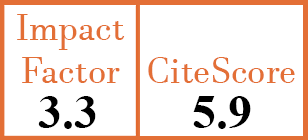Epidemiology
Public Health Interventions for Osteoarthritis - updates on the Osteoarthritis Action Alliance’s efforts to address the 2010 OA Public Health Agenda Recommendations
L.F. Callahan1, K.R. Ambrose2, A.L. Albright3, M. Altpeter4, Y.M. Golightly5, K.F. Huffman6, A.E. Nelson7, S.E. Weisner8
- Osteoarthritis Action Alliance, Thurston Arthritis Research Center; Department of Medicine; Depts. of Orthopaedics and Social Medicine; Dept. of Epidemiology, Gillings School of Global Public Health, University of North Carolina, Chapel Hill, USA. leigh_c
- Osteoarthritis Action Alliance, Thurston Arthritis Research Center, University of North Carolina, Chapel Hill, USA.
- Osteoarthritis Action Alliance, Thurston Arthritis Research Center, University of North Carolina, Chapel Hill, USA.
- Osteoarthritis Action Alliance, Thurston Arthritis Research Center, University of North Carolina, Chapel Hill, USA.
- Osteoarthritis Action Alliance, Thurston Arthritis Research Center; Department of Epidemiology, Gillings School of Global Public Health; Injury Prevention Research Center; Division of Physical Therapy, University of North Carolina, Chapel Hill, USA.
- Osteoarthritis Action Alliance, Thurston Arthritis Research Center, University of North Carolina, Chapel Hill, USA.
- Osteoarthritis Action Alliance, Thurston Arthritis Research Center; Department of Medicine, University of North Carolina, Chapel Hill, USA.
- Osteoarthritis Action Alliance, Thurston Arthritis Research Center, University of North Carolina, Chapel Hill, USA.
CER12748
2019 Vol.37, N°5 ,Suppl.120
PI 0031, PF 0039
Epidemiology
Free to view
(click on article PDF icon to read the article)
PMID: 31621558 [PubMed]
Received: 06/09/2019
Accepted : 06/09/2019
In Press: 14/10/2019
Published: 15/10/2019
Abstract
Osteoarthritis (OA) is a painful joint disease affecting more than 32.5 million adults in the US and over 350 million adults worldwide. The prevalence is expected to rise continually over the next several decades with significant impacts to societal health and economic costs as well as individuals’ daily activities and quality of life. In 2008, the Centers for Disease Control and Prevention (CDC) and the Arthritis Foundation (AF) led a collaborative effort to address approaches to reduce the burden of OA via public health interventions, policies (systems and environmental), and communication strategies. This collaboration resulted in the National Public Health Agenda for OA (OA Agenda), which was vetted by more than 75 stakeholder organisations and released in 2010. The OA Agenda listed ten recommendations focused on public health interventions for OA including weight management, physical activity, self-management education, and injury prevention, and policies, systems, communication, research and evaluation. In 2011, the CDC and AF mobilised the OA Action Alliance (OAAA), a national coalition of organisations concerned with mitigating the public health impact of OA, to operationalise the recommendations set forth in the OA Agenda. Since then, the OAAA has grown to include more than 110 organisations that work collectively to increase awareness about the prevention and management of OA, provide educational resources, and expand access to evidence-based programmes for target audiences including individuals with OA, community-based organisations, healthcare systems and providers, and policymakers. This review highlights the OAAA’s progress to date in addressing the OA Agenda recommendations; successes and challenges in delivery of effective communication, programmes, and resources; and future implications.


